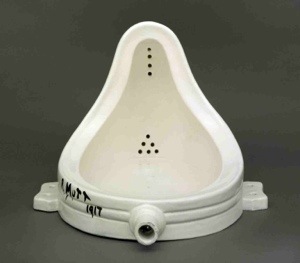In my first blog of 2013, I attempt to explain some of the things that people don't quite seem to get when they look at art.
Those few of you that have read my earlier writings will know that I often ask 'the question' - Is it art?
Undoubtedly it's an easy question to answer, but by Jove, its a hard one to justify. From what I've noticed, people who don't know a great deal about art (and ,unfortunately, a minority of those who do) tend to miss the real meaning behind the artist's intentions unless the piece screams what it represents; perhaps, then, such people just don't know how to dig beneath the surface of what they see?
...But then, why should they? How can an ordinary, perfectly normal person come to accept that there is, for example, at least a shred of meaning behind Hirst (or at least his team) trapping animals in formaldehyde.
There are, of course, ways in which you can learn to appreciate art. I'll try explain some below:
Firstly, study past the obvious.
Often, what is most fun about art and for me, most fun about the prospect of studying Art History is indeed to decipher a piece of art like a puzzle. What can you see? What can't you see? Look behind the obvious and discover what is not obvious or what is significantly absent. This can really bring the art alive once it presents hidden stories and ideas to you that can further your enjoyment.
This leads me directly onto my next point:
Secondly, take time to appreciate the formal elements and the composition of the piece.
Buy and large, an artist's placement of the features of a composition is deliberate. Though it is generally a bad idea to force or meticulously position everything in a piece and more interesting for there to have been some looseness in consideration of composition, few pieces possess compositions that are meaningless. Look at where things are and where things are not. Is there a lot of space? What effect does this have? Is someone bigger or smaller than another character or thing? Why? Etc
Thirdly, things are not always as they appear.
Whether this turns out to be a good or a bad thing, take time to appreciate what you are looking at, especially when it comes to the more radical of the 20th and 21st century movements and sub-genres. For example, when studying a cubist piece, consider its distortion and manner of obscurity carefully. Even the most bizarre pieces that you mightn't even consider to be art can indeed be of great bearing when it comes to meaning.
I suppose the moral here is take time and think about it. If the piece doesn't do it for you, maybe the story behind it will. Recently we had a coffee morning in a Literature class and discussed art. Few in the the room would accept the artistic value of Duchamp's infamous urinal statement Fountain, one of 4 replicas pictured below.
Even fewer accepted Emin's My Bed, her famous Turner-prize-winning installation, as being art. Only myself and select others stopped to try and think about the art and explain it to the group, who - buy and large - dismissed us with swift ignorance.
It just goes to show that art deserves time - to consider, to do and to observe. I haven't discussed these works in depth so that maybe after you're done reading this, you can explore their meaning yourself and test out my steps to artistic appreciation through means of two of art history's most controversial works.
You can learn all of these things if you're willing. Although, as the saying goes:
You can take a horse to water, but you can't make it drink.


